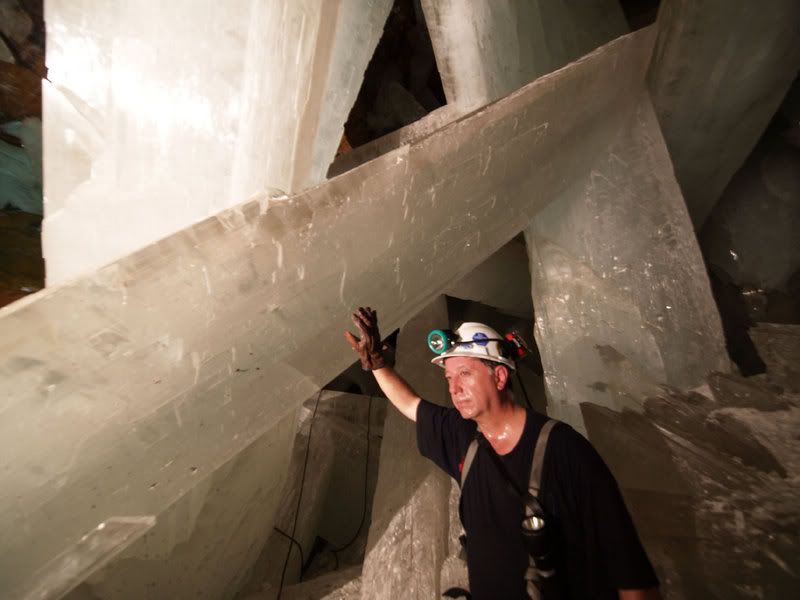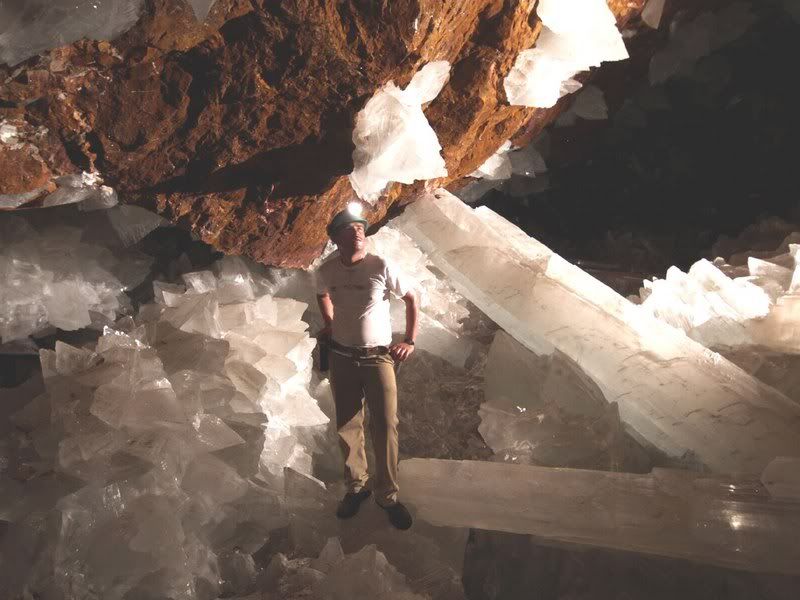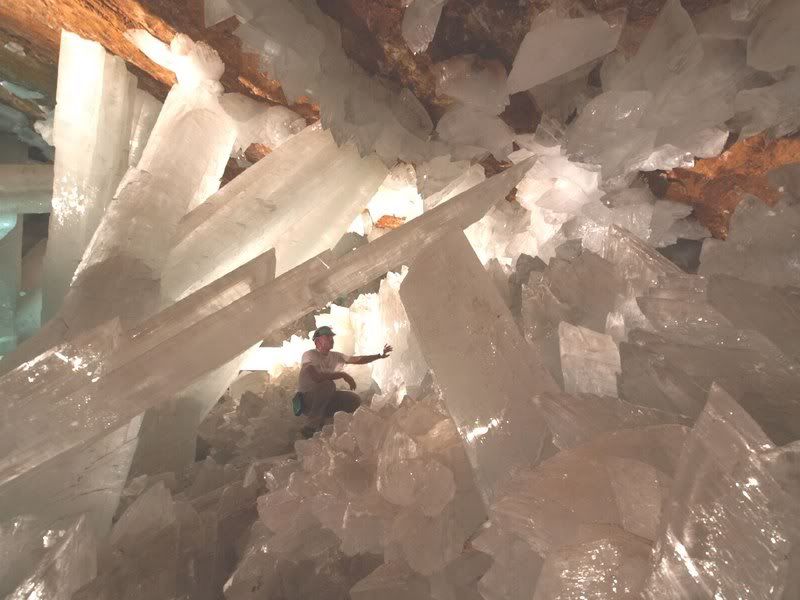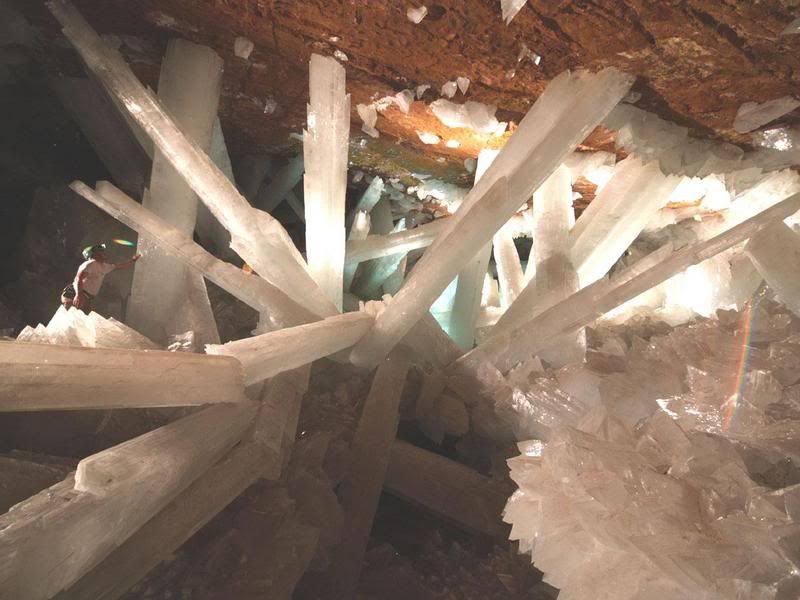Giant Crystal Cave's Mystery Solved
Stefan Lovgren
for National Geographic News
April 6, 2007
It's "the Sistine Chapel of crystals," says Juan Manuel García- Ruiz.
The geologist announced this week that he and a team of researchers have unlocked the mystery of just how the minerals in Mexico's Cueva de los Cristales (Cave of Crystals) achieved their monumental forms.
Buried a thousand feet (300 meters) below Naica mountain in the Chihuahuan esert, the cave was discovered by two miners excavating a new tunnel for the Industrias Peñoles company in 2000.
The cave contains some of the largest natural crystals ever found: translucent gypsum beams measuring up to 36 feet (11 meters) long and weighing up to 55 tons.
"It's a natural marvel," said García-Ruiz, of the University of Granada in Spain.
To learn how the crystals grew to such gigantic sizes, García-Ruiz studied tiny pockets of fluid trapped inside.
The crystals, he said, thrived because they were submerged in mineral-rich water with a very narrow, stable temperature range—around 136 degrees Fahrenheit (58 degrees Celsius).
At this temperature the mineral anhydrite, which was abundant in the water, dissolved into gypsum, a soft mineral that can take the form of the crystals in the Naica cave.
The new findings appear in the April issue of the journal Geology.






THIS IS ONE REASON WHY OUR WORLD IS SO ABSOLUTELY FABULOUS!!
JOIN PROJECT 1 WORLD WITH ME!!
Stefan Lovgren
for National Geographic News
April 6, 2007
It's "the Sistine Chapel of crystals," says Juan Manuel García- Ruiz.
The geologist announced this week that he and a team of researchers have unlocked the mystery of just how the minerals in Mexico's Cueva de los Cristales (Cave of Crystals) achieved their monumental forms.
Buried a thousand feet (300 meters) below Naica mountain in the Chihuahuan esert, the cave was discovered by two miners excavating a new tunnel for the Industrias Peñoles company in 2000.
The cave contains some of the largest natural crystals ever found: translucent gypsum beams measuring up to 36 feet (11 meters) long and weighing up to 55 tons.
"It's a natural marvel," said García-Ruiz, of the University of Granada in Spain.
To learn how the crystals grew to such gigantic sizes, García-Ruiz studied tiny pockets of fluid trapped inside.
The crystals, he said, thrived because they were submerged in mineral-rich water with a very narrow, stable temperature range—around 136 degrees Fahrenheit (58 degrees Celsius).
At this temperature the mineral anhydrite, which was abundant in the water, dissolved into gypsum, a soft mineral that can take the form of the crystals in the Naica cave.
The new findings appear in the April issue of the journal Geology.






THIS IS ONE REASON WHY OUR WORLD IS SO ABSOLUTELY FABULOUS!!
JOIN PROJECT 1 WORLD WITH ME!!


 Keoi
Keoi


 WOW!
WOW! 
 Vineyard NAncy
Vineyard NAncy  Vineyard Nancy
Vineyard Nancy


 Future pather, Sharyn, yes the Superman set…and ‘gypsonite’
Future pather, Sharyn, yes the Superman set…and ‘gypsonite’ 





Comment